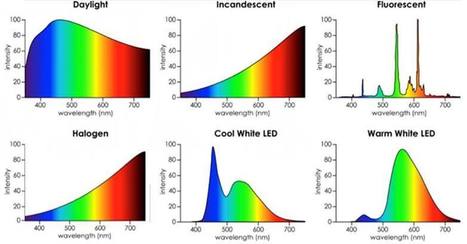In this interview, Dr. Wunsch, a world class expert on photobiology, shares the hidden dangers of LED lighting that most people are completely unaware of.
- Near-infrared is important as it primes the cells in your retina for repair and regeneration, which explains why LEDs — which is devoid of infrared — are so harmful for your eyes and health
- One-third of the energy your body consumes comes from the food you eat. The vast majority of the energy your body needs to maintain the systemic equilibrium comes from environmental infrared light exposure
- LEDs sabotage health and promote blindness. Limit your exposure to blue light during the daytime and at night. Swap out LEDs for incandescents or low-voltage incandescent halogen lights



 Your new post is loading...
Your new post is loading...









A very interesting article by Dr Mercola on lighting. It explains the differences between incandescent lights, including halogen and LED lights. Apparently LEDs leave out an important part of the spectrum that is healing for the human organism...